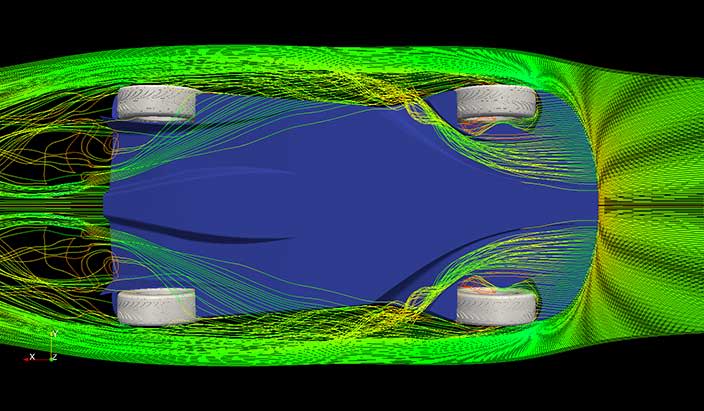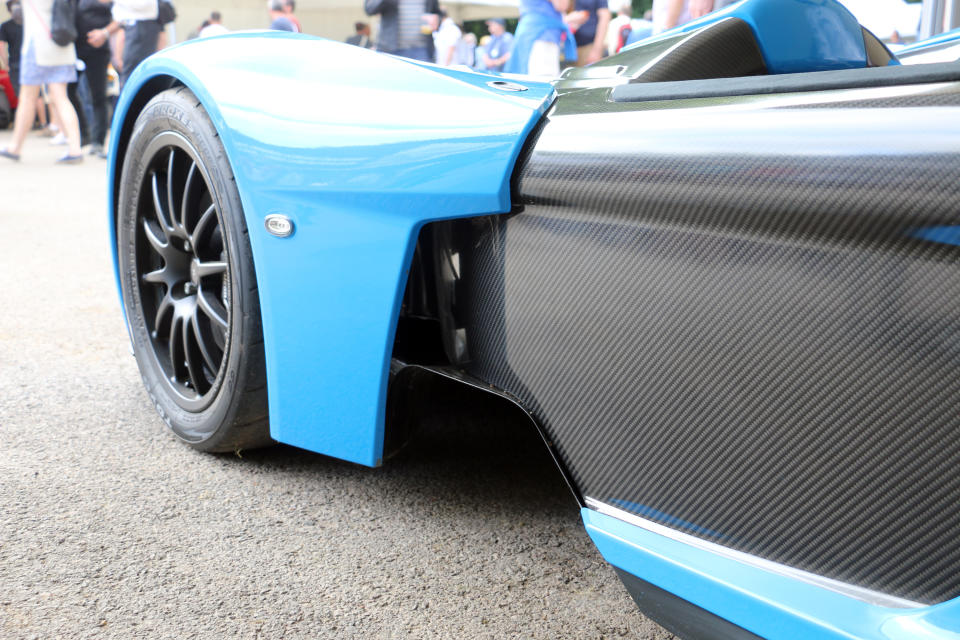Aston Martin and Red Bull's Hypercar Uses Ground Effect Like No Road Car Ever Before

When somebody decides to turn a regular car into something much faster than stock, adding big wings is inevitable in order to create more downforce. Without that, the car would simply fly off the road above a certain speed. The problem is that these wings create drag, which slows the car down above 140mph despite improving cornering speeds.
Below that speed, you should be fine, as Olly Clark shall now demonstrate:
Purpose built supercars are luckier. Their bodies leave the wind tunnels optimized for sheer speed with a flat underbody ending in massive rear diffuser and a sleek upper shell, while active aerodynamic features such as flaps and spoilers acting as air brakes help them go way faster around a track than the numbers would suggest.
If you look at Ferrari's or McLaren's most advanced limited edition track specials, you see pretty much how far they can go with their aero, which is ultimately limited because all of these cars have to based on their production models.
The Ferrari F12tdf is full of holes and arches to let the airflow do its job, and it even has active flaps both at the front and the rear to create as much downforce as possible with the help of its also enlarged rear spoiler.

The McLaren 675LT has a front splitter the size of a Tokyo apartment and a rear wing that McLaren believes to justify the 'Long Tail' name. What's for sure is that it can go up and down at various angles, changing the car's behavior in a split second.

Then, we arrive to the soon-to-be-properly-named Aston Martin-Red Bull 001, otherwise known as Adrian Newey's vision for a road car and a car we've called the McLaren F1 for a new generation. It's got a naturally-aspirated V12, electric boost also acting as the reverse gear, a one-to-one power-to-weight ratio and the claimed speed around a circuit of an LMP1/F1 car. What makes that possible is the light weight and the aerodynamic package with additional diffusers at the front:
Call it an LMP1 car with F1 bits, a closed cockpit F1 car or an LMP1 car with an LMP2 body, the fact is that this is the first proper ground effect road car ever. Except for a slightly less complicated one known as the Elemental Rp1.

You may be able to name a few other road legal track cars without a rear wing, but it will be hard to find another which weighs 1270 pounds, packs a 310 horsepower 2.0 Ecoboost and has more than third of its weight in downforce at 100mph.
Almost all of that comes from the ground effect underbody, developed at the MIRA wind tunnel.

When I drove the Rp1 prototype, the car was already very fast, but nowhere near ready. At this year's Goodwood Festival of Speed, the progress was clearly visible as one of their pre-production cars ran up and down the hill. More aero, better heat management, a smarter interior, and that familiar hole behind the front wheels that makes this thing so damn grippy just before you fully engage the turbo boost:

Double the weight, triple the horsepower, add a lot more revs, electric boost and hell knows how much electric wizardry like torque-vectoring, and you get to the AM-RB 001. It is going to be absolutely insane, giving everybody from Koenigsegg to McLaren a lot to think about. Which is good.


 Yahoo Autos
Yahoo Autos 